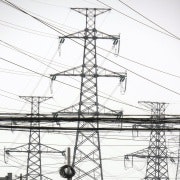The problems with a 'pipe' limit on connection capacity
There have been some suggestions that placing an upper limit on a household’s connection to the grid, as is done in many countries, would be a good way to limit demand peaks in Australia.
However, it appears this is unlikely to be useful on its own as a peak load reduction strategy.
The charts below show the times and seasons of the annual demand peaks for two different datasets (a total of 361 houses). Although the peak for each aggregated dataset occurs in summer, as is common for residential networks, less than a third of the individual household peaks occur in summer, with about half of the peaks occurring in winter. Although the most common time for individual household demand to peak is around 5-7pm (which includes winter peaking houses), more than half the houses peak outside this time.
Each aggregate peak is in summer because the times of generally high demand are more tightly clustered in summer than they are in winter.
This means that simply applying a demand cap, or ‘pipe’, will have a much greater impact on peaks outside the network peak than it will on the network peak itself. This has two consequences:
1) It may penalise those who are not contributing significantly to the network peak, and
2) It is economically inefficient, in that peaks outside the network peak are being limited unnecessarily. For example, applying a 6kW ‘pipe’ to the houses in the following chart would reduce the network peak by 5.2 per cent whereas the aggregate reduction in peaks outside the network peak would be 17.4 per cent.
The chart below compares each household’s annual peak with their demand during the time of the network peak. All the households above the red line have an annual peak that is greater than their peak during the network’s annual peak – which is all but one. For example, the red marker has an annual peak of 14.15kW but was contributing only 0.36 kW during the network peak.
Of course, simply restricting each household’s demand during the time of the previous year’s network peak could just shift demand to a new unrestricted peak. It is likely that limits should apply to all periods that are at or near the season and time of the network peak. Demand limits of some kind for individual households may also increase customer awareness of demand, where previous focus has been only on energy. This may serve to flatten load patterns and reduce the likelihood of growth in demand peaks over time.
Different feeders have different peak periods, however having feeder-specific peak periods and restrictions would be complex and have high administration costs – although it is possible to envisage a time when smart meters, remote monitoring and automation could make this feasible. Thus, at this stage, regional or network-wide averages could be applied. The most equitable way to do this is through a demand charge that is applied in proportion to each household’s contribution to the annual peak. However, this may be quite difficult to implement ex post, and would need to be applied incrementally, accompanied by customer education. This is the focus of ongoing research at the APVI, particularly in relation to the regulation of distributed energy options.
This work was carried out for the Australian PV Institute. Rob Passey works at UNSW and IT Power, Ben Noone is at UNSW and Muriel Watt works at UNSW, IT Power and Australian PV Consulting.



















